Pekan Quarry Floating Wetlands
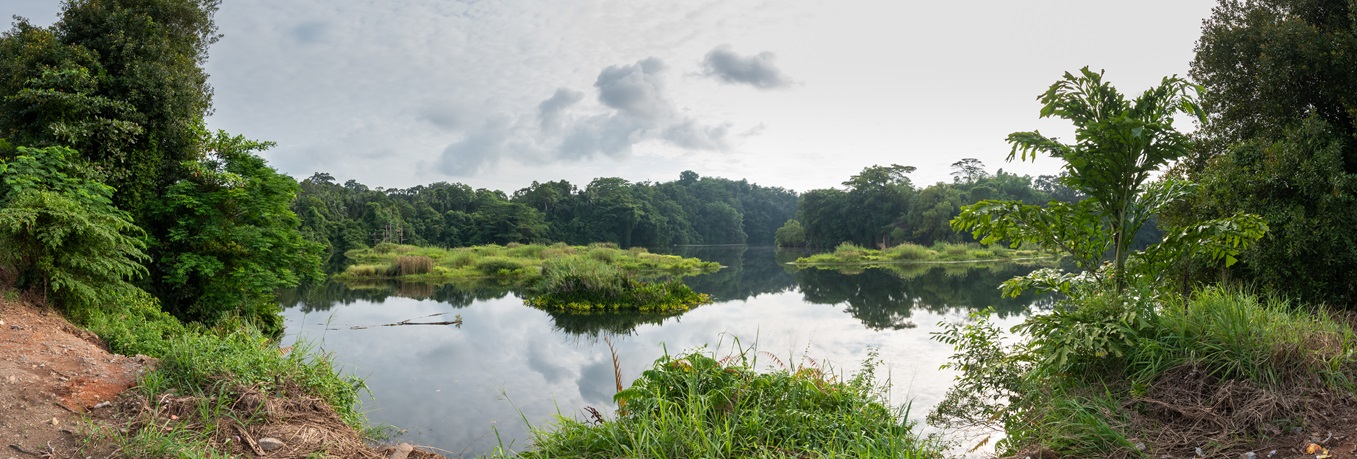 Photo by: Davis Ho
Photo by: Davis Ho
Over the years, Pekan Quarry has transformed from a bleak disused quarry, into a thriving freshwater wetland habitat, home to a variety of fauna and flora. As part of the habitat enhancement programme, floating wetlands were first introduced to Pekan Quarry in 2015 as a pilot initiative to increase the area of usable wildlife habitat. Since then, three more bigger floating wetlands have been installed, serving as nesting and roosting sites. These floating wetlands have been successful in increasing the area of usable wildlife habitat, from the edges of the quarry to the water surface itself. Herons, kingfishers, waterhens, otters, as well as dragonflies and damselflies have been observed to be using these floating wetlands.
Importance of Freshwater Wetlands
Wetlands provide many benefits to the ecosystem. Wetland plants filter sediments from the water and some can even remove heavy metals and other pollutions as well, helping to prevent the contamination of downstream water bodies.
Many animals and plants depend on the wetlands for survival. Plants provide ideal nesting places and food for birds and other small animals, while the fauna in turn help to disperse seeds.
Creation of the Floating Wetlands
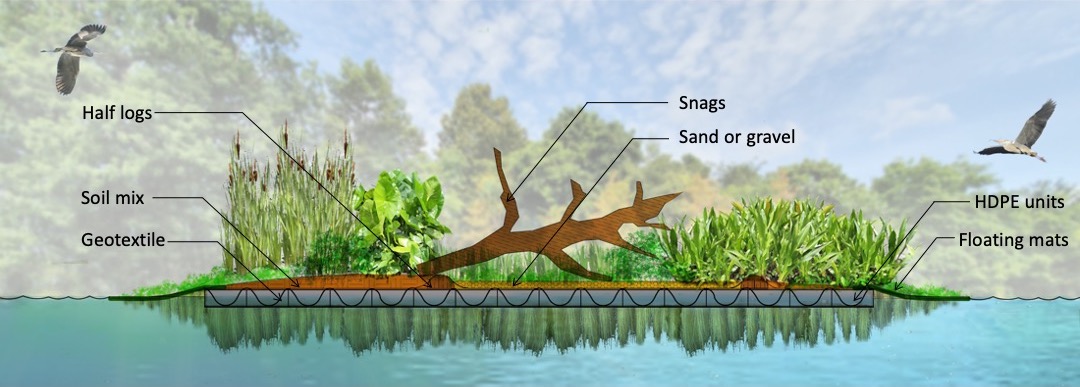 Cross-section view of the floating wetlands showing the various components used to create a suitable habitat for wildlife at Pekan Quarry
Cross-section view of the floating wetlands showing the various components used to create a suitable habitat for wildlife at Pekan Quarry
Four large clusters of floating wetlands have been deployed in Pekan Quarry. Together, they cover a combined area of 4,000 m2, the size of about eight basketball courts. The foundation of the wetlands consists of hexagon-shaped modules made with highly durable High-Density Polyethylene (HDPE) and developed by the Housing Development Board. Each module can bear a load of up to 80kg but is lightweight, scalable and can be pieced together to form large natural shapes of islands. The module has a hole in the middle, for the planting of freshwater wetland plants. A layer of soil is laid on the surface and floating mats attached to the module’s edges provide a stable surface for wildlife to climb on or forage from. Logs, snags and sandy areas are added to create more areas for animals to perch on and bask.
Heron Nesting Platforms
 Photo By: Noel Thomas
Photo By: Noel Thomas
These platforms were installed to replicate the natural nesting sites of herons and cater to the various species that have different height preferences when looking for suitable places to build a nest. Some of the herons that are commonly sighted roosting on the platforms includes the Grey Heron (Ardea cinerea), Black-crowned Night Heron (Nycticorax nycticorax), Purple Heron (Ardea purpurea) and Great-billed Heron (Ardea sumatrana).
 Photo By: Noel Thomas
Photo By: Noel Thomas
Grey Heron (Ardea cinerea) at Pekan Quarry
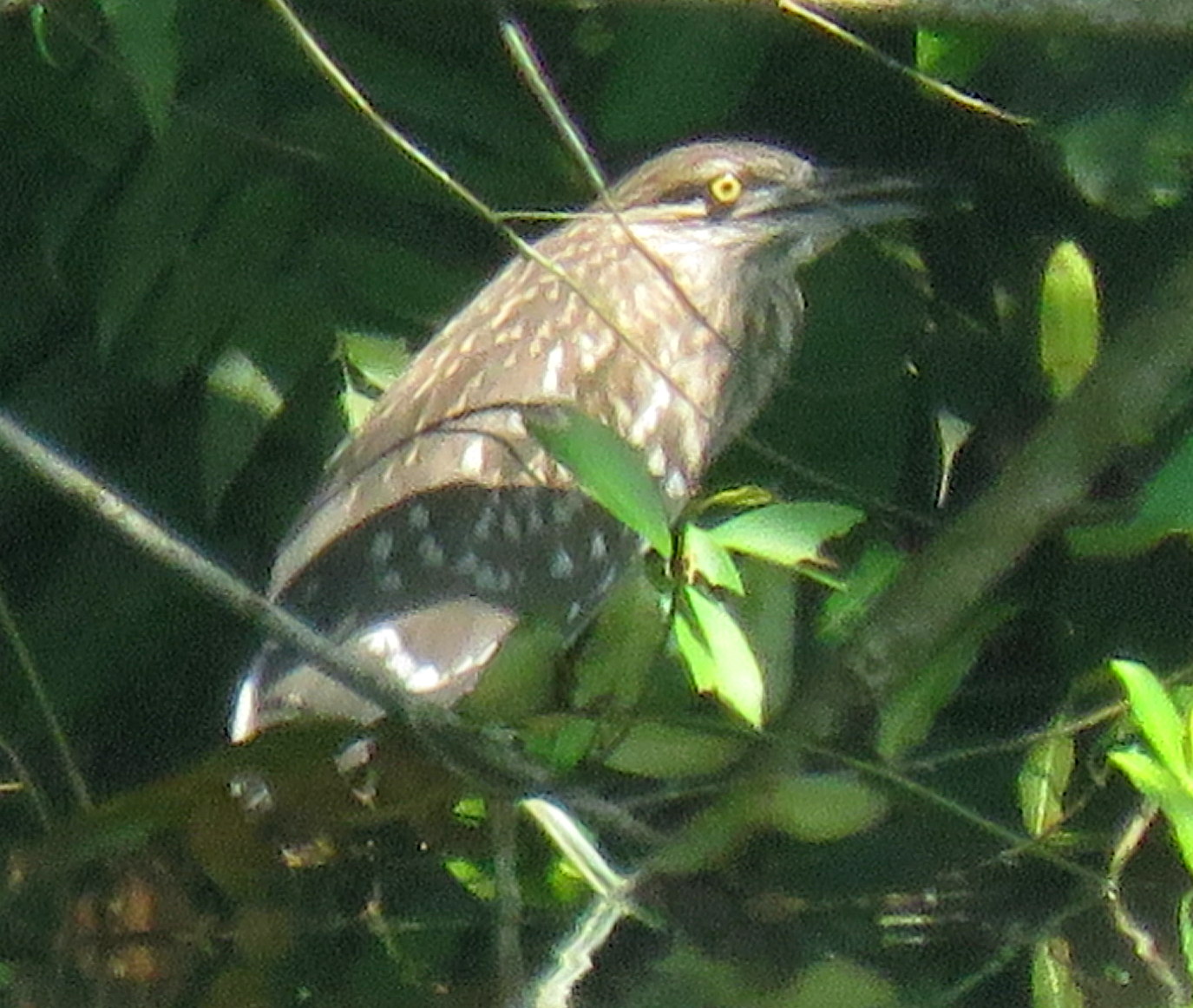 Photo By: Jacky Soh
Photo By: Jacky Soh
Black-crowned Night Heron (Nycticorax nycticorax) at Pekan Quarry
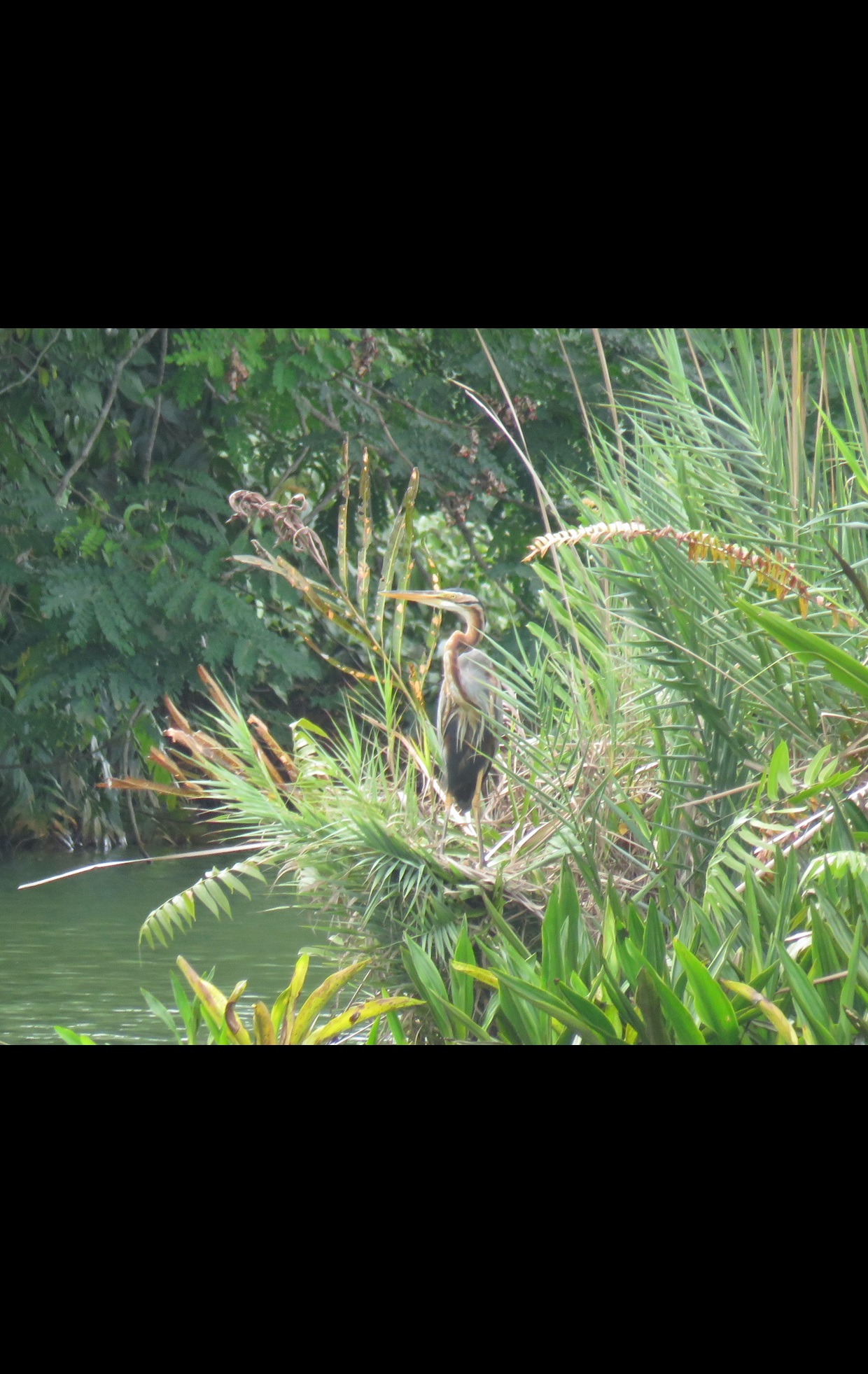 Photo By: Jacky Soh
Photo By: Jacky Soh
Purple Heron (Ardea purpurea)
 Photo By: Jan Tan
Photo By: Jan Tan
Great-billed Heron (Ardea sumatrana)
Youth Steward for Nature – Pekan Quarry Citizen Science Bird Survey
 Photo By: Noel Thomas
Photo By: Noel Thomas
YSN Members left to right: Liu Yixuan, Megan Sim, Fermandez Francis, Samuel Loh, Jason Chan, Adam Firdaus Tan, Noel Thomas (NParks Senior Manager)
Nesting platforms have been installed on the floating wetlands to encourage herons to nest. The Pekan Quarry Citizen Science Bird Survey is an NParks Youth Steward for Nature (YSN) initiative to involve the public in monitoring the number of birds using the nesting platforms. Relevant tide levels can be extracted to see how it is associated with bird roosting activity on the nesting platforms. Such data analytics will help in formulating future conservation strategies. Over a year, results and observations will be uploaded on this webpage.
We hope you will visit the floating wetlands at Pekan Quarry and contribute to this survey by submitting your observations via the online form available at the look-out point.
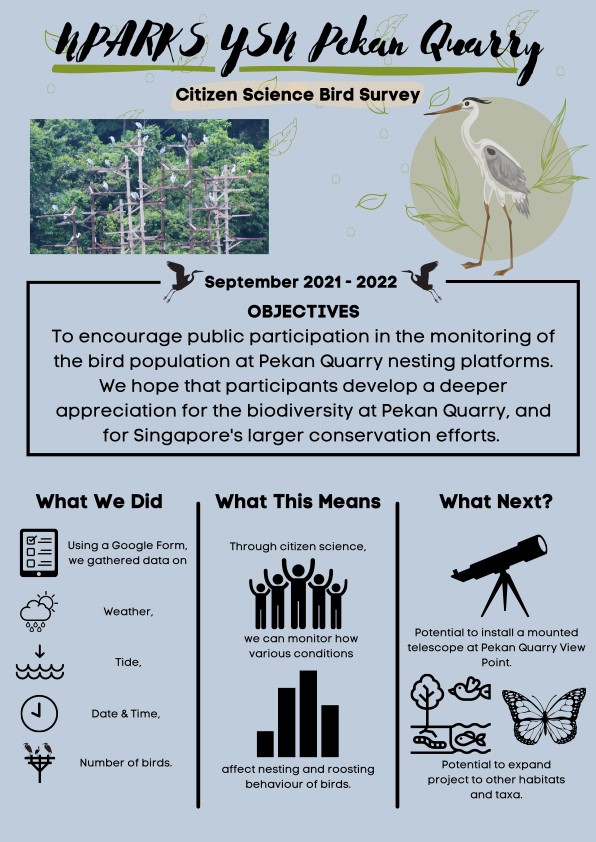
Results from Bird Survey
Data collected from the Pekan Quarry Citizen Science Bird Survey will be updated here. Do check back for the latest updated results, thank you.

